How to keep your child asleep all night
Eight ways to help your child get a good night’s sleep
Nothing looks more peaceful than a sleeping child. But even when they’re curled up and tucked into bed, their brains are working hard on developmental activities like memory consolidation (the process of putting experiences in order, learning what’s important and unlearning what’s not).
“[Sleep] is crucial for everyone but especially for kids, who are developing both mentally and physically,” says Dr. Sumit Bhargava, director of Stanford Children’s Health Sleep Center. “We are learning more and more about the impact of sleep on regulatory hormones. For example, in kids, the most intense period of growth hormone release is shortly after the beginning of deep sleep.”
So, sleep is important, especially for kids. Sadly, just knowing your kids need a good night’s sleep doesn’t mean they’ll get it. Adam Seligman, a physician’s assistant in the Stanford Children’s Health Sleep Center, offers these helpful suggestions:
1. Make a plan
Write up a bedtime ritual. If you have an infant, it might be as simple as singing a song and turning on the white-noise machine. If you have a toddler or an older child, ask for their input in forming the plan. Let them decide how many books you will read together and when the cuddles will happen (this helps them identify their own settling needs and gives them a sense of control). Next, list the steps in sequence — “Put on pajamas, brush teeth, read books, cuddle, lights out” — so everyone knows exactly what will happen. For kids that can’t read, use a chart with pictures. Review the plan together before you begin. When a plan is communicated and rehearsed, children are more likely to internalize it and less likely to ask for things that are not on the script.
2. Time together
Some kids become unsettled at bedtime because they’re longing for more attention from their caregiver. When parents work full time during the day, evenings are when kids get their parents’ attention.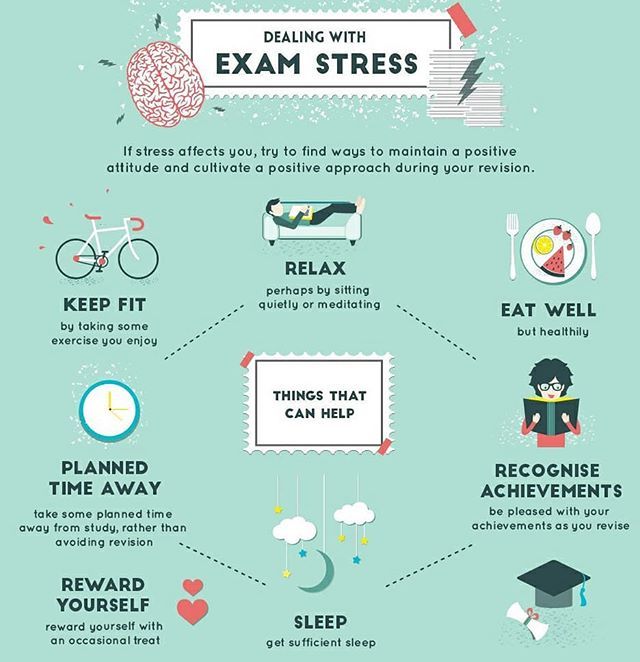 On the other hand, when a caregiver is home all the time, kids become dependent on the caregiver’s presence for comfort. Either way, spending a few minutes asking kids questions about their day (focusing on the positive) or telling them things you’ve noticed about them can be a nice ritual. For babies, spend 5 or 10 minutes cuddling and making eye contact, singing or saying soothing words.
On the other hand, when a caregiver is home all the time, kids become dependent on the caregiver’s presence for comfort. Either way, spending a few minutes asking kids questions about their day (focusing on the positive) or telling them things you’ve noticed about them can be a nice ritual. For babies, spend 5 or 10 minutes cuddling and making eye contact, singing or saying soothing words.
3. Respect the routine
Sticking to a set bedtime helps children feel secure because it offers predictability. Kids of all ages (and grown-ups, too) should ideally go to sleep and wake up at the same times every day, give or take 30 to 60 minutes. Yes, that includes weekends, too. This may mean discouraging teens from sleeping in on Saturday mornings since it can disturb their circadian rhythm and make waking up on school days that much harder. For younger kids, earlier bedtimes (before 9:00 p.m.) mean they get more sleep and are better rested in the morning. Younger kids need between 10 to 12 hours of sleep a night, so if your kids have an early rise time for daycare or school, make sure their bedtime is early enough to ensure they get a full night’s rest.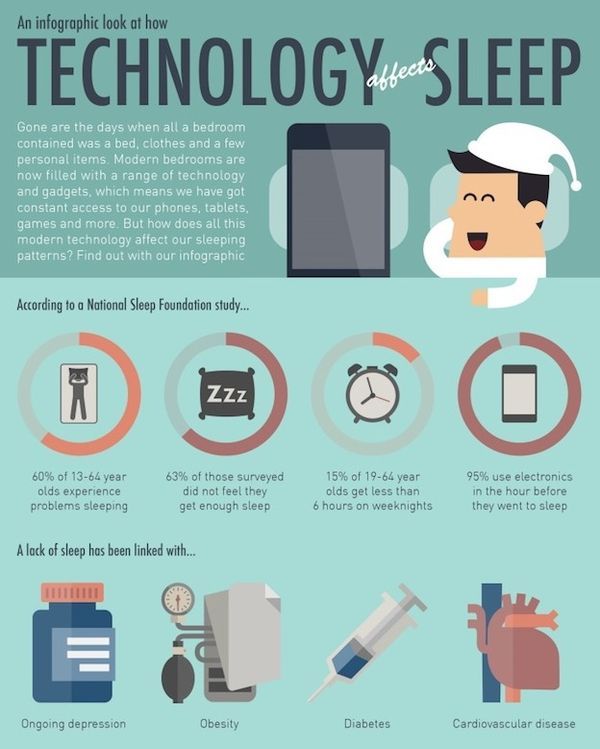
4. Power down
Electronic screens are a bad idea before bed because their light stimulates the brain. This can make kids feel wired just when they should be resting, and it can also inhibit the production of melatonin and serotonin, the sleepy-time hormones. Ideally, kids should turn off screens at least one to two hours before bed. Limiting screen time can help in other ways, too. Kids who are off their screens will be more active, burning through their natural physical energy, which makes it easier to settle down at bedtime. What happens during the day affects the night.
What about sleep technologies? For younger kids, some parents use a special, colorful lighted sleep/wake clock to help their kids know when it’s nighttime and when it’s wake-up time. Personal wearable devices that track sleep (like a FitBit) can sometimes work as an effective screening tool for sleep issues. But they’re not diagnostic. If your child’s wearable device indicates they’re not getting quality sleep, it’s definitely worth seeing a sleep specialist to figure out why.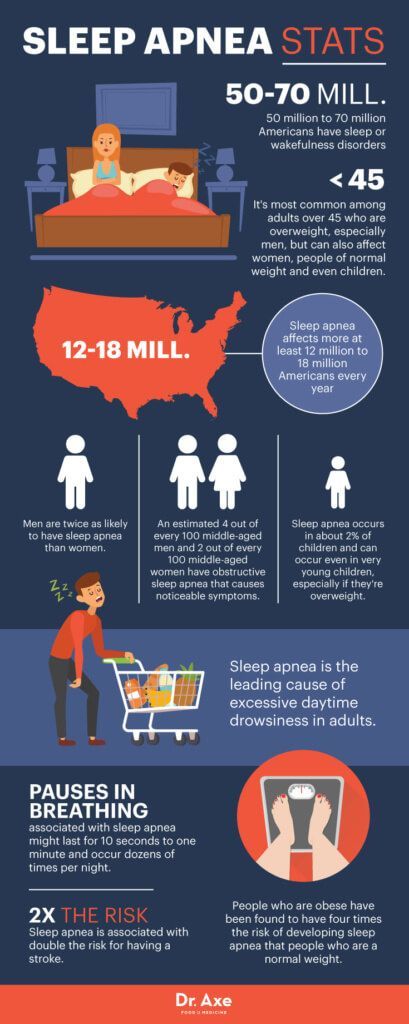
5. Keep it positive
Help younger kids who can’t tell time learn when it’s OK to rise by using a special clock that changes color at the appropriate sleep and wake times. Reward kids for waiting until the appointed hour. You can use a sticker chart and reward seven consecutive nights with a special treat or with fun one-on-one time, such as 10 minutes of playing a board game in the morning. But keep it positive. Don’t punish your kids for getting up. It might be frustrating as a parent to keep walking them back to bed, but you don’t want to create negative associations with being in bed.
6. Practice makes perfect
It’s also important to practice good “sleep hygiene.” Use the bed and bedroom for resting. Make sure toys and distractions are cleaned up before bed, or store them in another area of the house, if possible. Creating a strong sleep association with the bed and bedroom makes it easier to fall asleep there. The more your mind practices relaxing and falling asleep in a certain place, the easier it becomes.
7. Restless nights
If your child is having a hard time at night, it’s important to figure out if it’s from night terrors, sleepwalking or nightmares.
Nightmares are bad dreams that occur during REM sleep, and they are common in people of all ages. The distinguishing feature of a nightmare is that the dreamer will remember it. If your child had a nightmare or didn’t sleep well the night before, you can ask them about it in the morning. If they can talk about a bad dream, you can help them come up with some alternative endings or some other images to focus on instead. Explain that nightmares are a product of their imagination, and reassure them that they’re safe.
Sleepwalking and night terrors occur in slow wave sleep. They happen during the first third of the sleep cycle, and the dreamer won’t remember them. If your child is having night terrors or sleepwalking episodes, it’s important to have them evaluated by a sleep specialist.
8.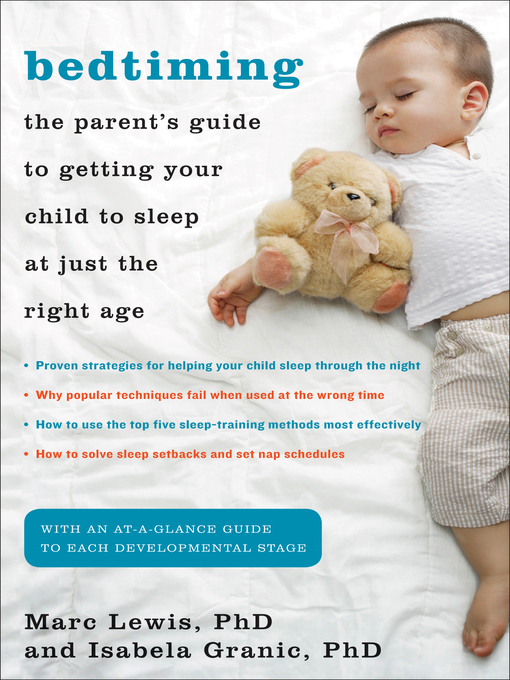 This too shall pass
This too shall pass
If you’re still facing a little insomniac after all your best efforts, don’t despair. Try to pull back and consider what might be going on. Sometimes children regress as they face a new developmental milestone. Sometimes they’re struggling to process a significant event. Trust your intuition.
Up until the age of four, parents really do have to teach children to sleep. This means taking them back to bed when they get up at the wrong time and helping to soothe their anxiety after bad dreams. If you need to use bribes at this age, don’t despair. It’s just a phase, and you’ll all make it through soon enough.
And if you’re unsure, talk with your pediatrician or contact a sleep specialist to help you create a plan that you can stick to. You don’t need to have a major issue to see a sleep specialist. Sometimes having an expert weigh in to help determine why the child is waking can help everyone relax and sleep better.
Childhood Insomnia and Sleep Problems
sleep
Does your child have trouble sleeping? Insomnia, bedtime fears, night terrors, and bed-wetting are common children’s sleep problems.
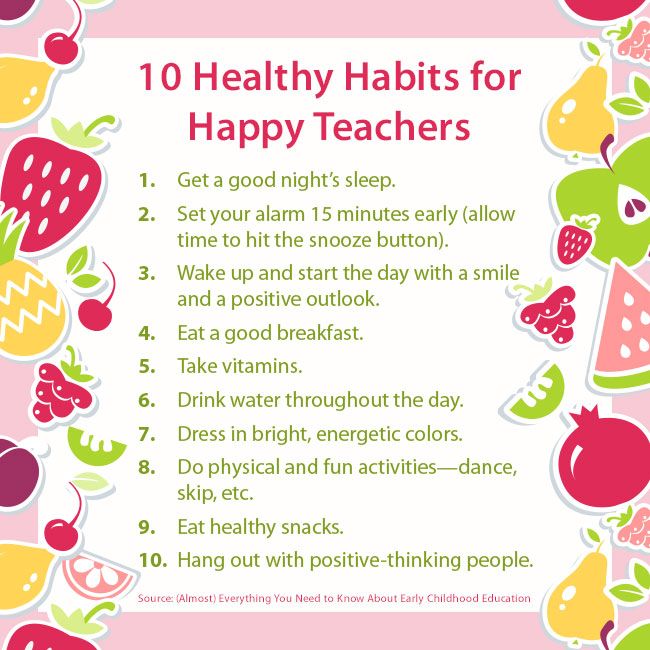 These tips can ensure your kid gets the rest they need.
These tips can ensure your kid gets the rest they need.Understanding sleep problems in children
Sleep problems are common among children, especially when they’re young. Insomnia, bedtime fears, night terrors, sleepwalking, and bed-wetting can all disrupt your child’s natural sleep pattern. Some children may not feel tired at their designated bedtime while others have trouble falling asleep without a parent present. Some kids will frequently wake up in the middle of night, suddenly wide awake, and either toss and turn or come and wake up mom and dad.
It can be frustrating to have your own sleep regularly disturbed and then find yourself having to rush around in the morning because your child’s late getting up, or having to deal with a fussy, moody child who’s low on sleep. But there is hope. Many childhood sleep problems are linked to daytime behavior and bedtime habits that you can work with your child to change. With a little patience and discipline, you can help your child overcome their sleep difficulties, help them fall and stay asleep—and get back on track to more restful nights of your own.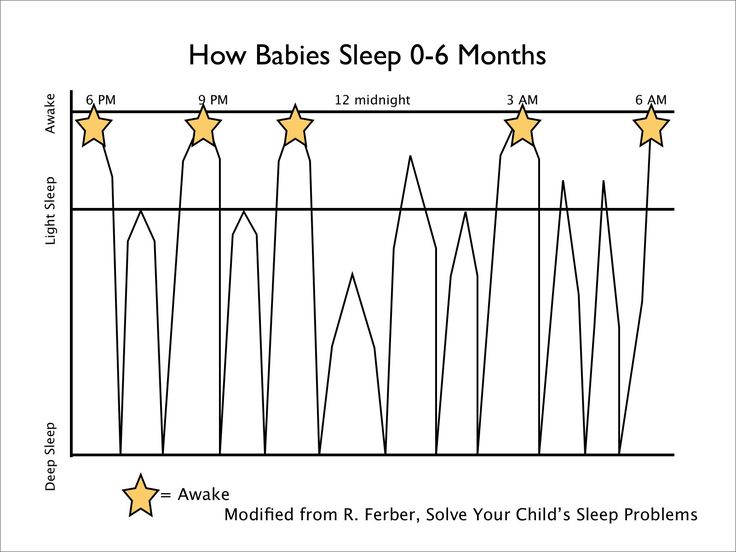
How much sleep do children need?
To function at their best, children and teens typically need more sleep than adults. The chart below outlines the recommended hours that developing kids should spend asleep.
| How many hours of sleep do kids need? | |
| Age group | Recommended sleep time |
| Infants (4 to 12 months) | 12 to 16 hours (including naps) |
| Toddlers (1 to 2 years) | 11 to 14 hours (including naps) |
| Children (3 to 5 years) | 10 to 13 hours (including naps) |
| Children (6 to 12 years) | 9 to 12 hours |
| Teens (13 to 18 years) | 8 to 12 hours |
Children, just like adults, have trouble controlling their moods when they’re sleep deprived.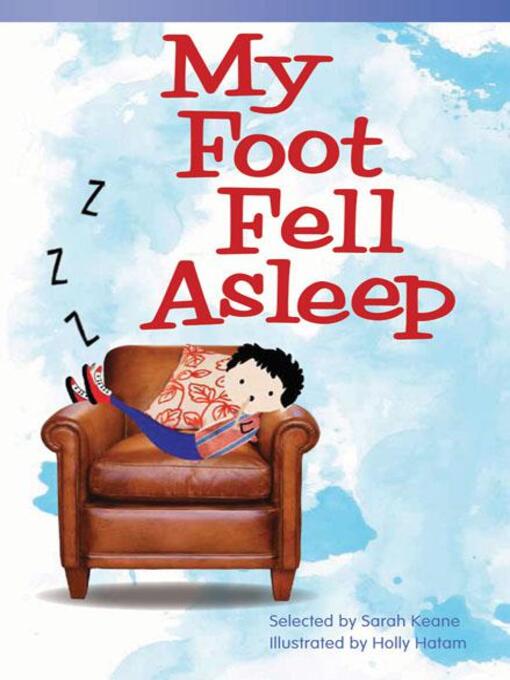 Sleep, or lack thereof, affects much of a child’s behavior and state of mind. In some cases, the symptoms of insufficient sleep can even mimic those of ADHD.
Sleep, or lack thereof, affects much of a child’s behavior and state of mind. In some cases, the symptoms of insufficient sleep can even mimic those of ADHD.
If your child isn’t getting enough sleep, they may:
- Often seem cranky, irritable, or over-emotional.
- Have trouble concentrating at school or at home? Has a teacher informed you of this problem.
- Fall asleep while riding in the car.
- Appear to struggle following conversations or seem to “space out” a lot.
- Have trouble waking up or fall back asleep after you’ve gotten them up for the day.
- Often become drowsy or “crash” much earlier than their regular bedtime.
If your child wakes up often in the night, or has trouble settling down, it could mean they’re struggling with insomnia, one of the biggest sleep issues among kids.
Insomnia in children
Insomnia is the inability to fall asleep or stay asleep at night, resulting in unrefreshing or non-restorative sleep.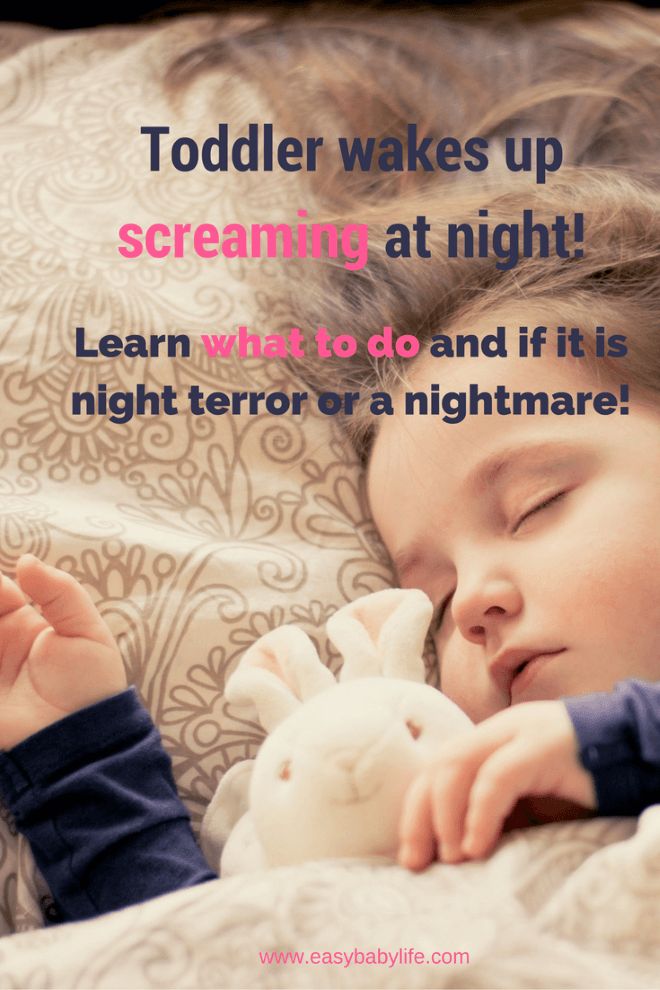 Often, the issue resolves itself over time. But if your child experiences difficulty sleeping more than three times a week for several months, and it significantly impairs their daytime functioning, it may point to insomnia or another sleep disorder.
Often, the issue resolves itself over time. But if your child experiences difficulty sleeping more than three times a week for several months, and it significantly impairs their daytime functioning, it may point to insomnia or another sleep disorder.
Causes of insomnia in kids
For many children, their difficulties falling or staying asleep stem from their daytime habits or how they spend their time right before bed. Eating too much sugary food during the day, for example, or watching TV right before bed could be enough to disrupt your child’s sleep. Of course, younger children especially will have difficulty making the connection between their habits and the quality of their sleep, so you’ll have to act as a sleep detective on their behalf.
Other common reasons why your child may be experiencing sleep difficulties include
- Stress. Yes, they are young, but children also experience stress—often triggered by issues at school or home. They may be struggling to keep up in class, experiencing problems with their friends, or even being bullied.
 At home, stress can arise from parents’ marital problems, the arrival of a new baby, or changes in their sleeping arrangements that now require them to share a bedroom with a sibling, parent, or grandparent, for example.
At home, stress can arise from parents’ marital problems, the arrival of a new baby, or changes in their sleeping arrangements that now require them to share a bedroom with a sibling, parent, or grandparent, for example. - Caffeine. Many sodas and energy drinks contain caffeine which can keep kids awake at night. Try to limit your child’s consumption past lunchtime. Better yet, try to cut out these types of drinks as much as possible.
- Side effects of medications. Some drugs, such as those used to treat attention deficit hyperactivity disorder (ADHD) and antidepressants, can also cause insomnia in children.
- Other medical issues. It could be a sleep disorder, such as sleep apnea or restless leg syndrome, or perhaps it’s triggered by a stuffy nose from allergies, growing pains, or itchy skin from eczema. Keeping your child up-to-date on health exams can help identify any issues that could interfere with their sleep.
Insomnia and “too much time in bed”
Sometimes, a child’s insomnia may stem from having more time allotted for sleep than they need each night.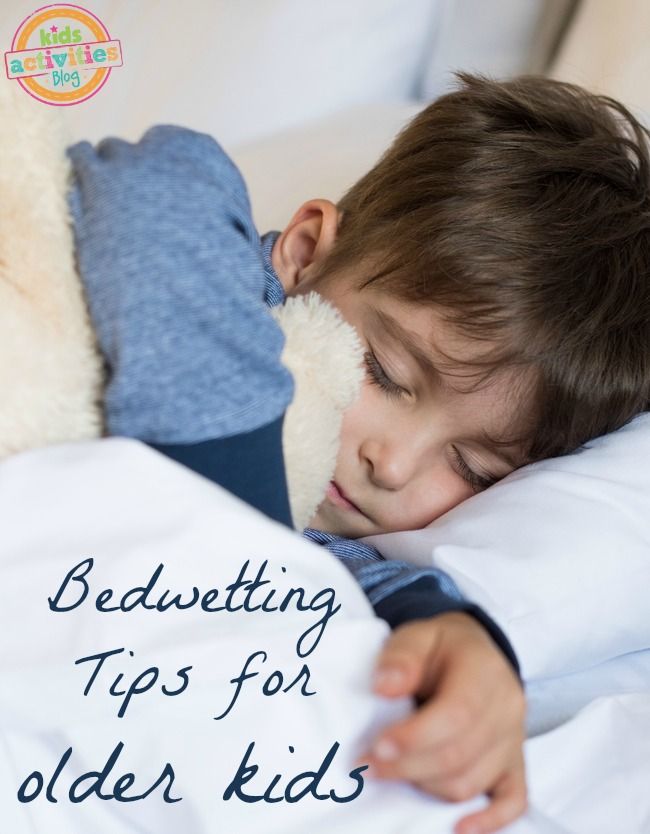 In these cases, your child could fight their bedtime or wake up in the night or too early in the morning. To find an ideal bedtime, note when your child starts to become drowsy in the evening. That’s the time they should be going to bed, so start their bedtime routine about 45 minutes earlier. If they’re awake much longer, they may start to get a second wind, and then become more difficult to handle.
In these cases, your child could fight their bedtime or wake up in the night or too early in the morning. To find an ideal bedtime, note when your child starts to become drowsy in the evening. That’s the time they should be going to bed, so start their bedtime routine about 45 minutes earlier. If they’re awake much longer, they may start to get a second wind, and then become more difficult to handle.
With over 25,000 licensed counselors, BetterHelp has a therapist that fits your needs. It's easy, affordable, and convenient.
GET 20% OFF
Online-Therapy.com is a complete toolbox of support, when you need it, on your schedule. It only takes a few minutes to sign up.
GET 20% OFF
Teen Counseling is an online therapy service for teens and young adults. Connect with your counselor by video, phone, or chat.
GET 20% OFF
Coping with insomnia in children
While establishing good lifestyle habits can help ensure a restful night for a child of any age, it’s especially important for older children and teens.
Make sure your child uses their bed only for sleep. If possible, encourage them to use their bed only for sleep and a pre-bedtime ritual (such as reading a book) rather than homework, for example. Otherwise, they’ll associate the bed with other activities rather than rest and relaxation. Similarly, don’t use your child’s bedroom for time-out or they’ll learn to associate it with punishment.
Ensure their bedroom is comfortable. Most kids sleep best in a slightly cool room (around 65 degrees). If there’s noise from outside, using white noise from a fan or sound machine can help to mask it. Make sure your child’s bed is not overloaded with toys, as that can become distracting at bedtime.
Try to keep the same sleep schedule, even on weekends. This will make it easier for your child to wake up and fall asleep naturally. Adolescents should not need to sleep much more than an hour past their usual wakeup time on the weekends. If they do, this indicates that they aren’t getting enough sleep during the week.
If they do, this indicates that they aren’t getting enough sleep during the week.
Keep your child from going to bed too hungry or full. A light snack (such as warm milk and a banana) before bed is a good idea. However, heavy meals within an hour or two of bedtime may keep kids awake.
Encourage an active lifestyle. Regular exercise prevents restlessness at night. An hour every day is the recommended amount. However, try to keep your kids from vigorous activity within three hours of bedtime.
Encourage natural light exposure first thing in the morning. Opening the blinds helps your child wake up and signifies the start of the day.
Pay attention to napping. Children typically need at least four hours between sleep periods before they are tired enough to doze off again. Although nap needs may vary, make sure your child is not asleep for too long or too close to bedtime.
Set limits with electronics.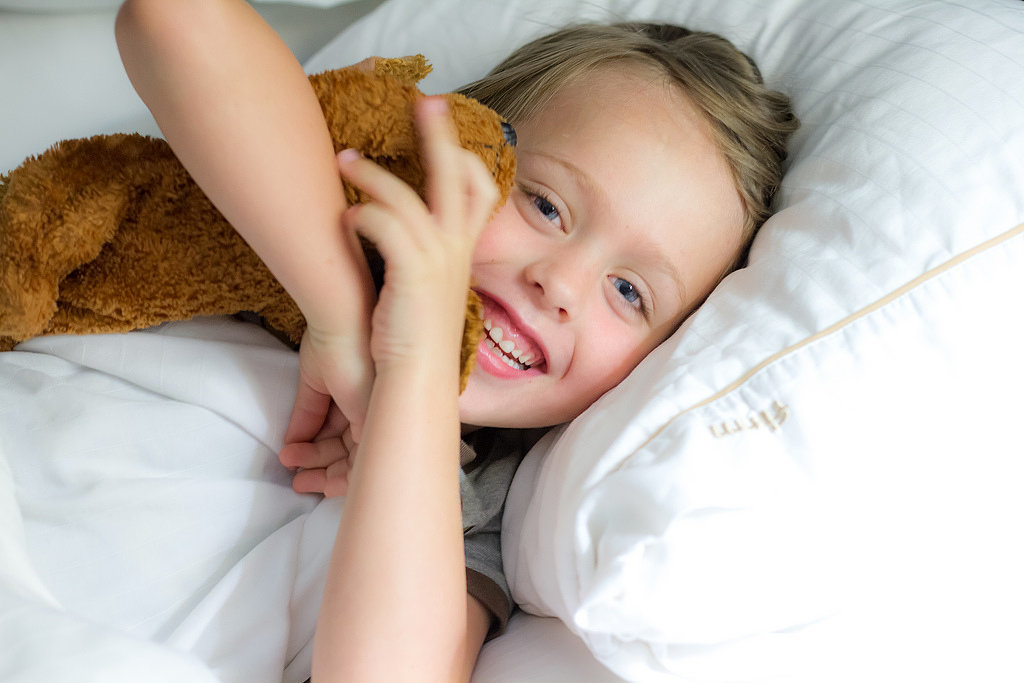 The blue light emitted by the TV, phones, tablets, and video games can disrupt the body’s sleep/wake cycle and makes it more difficult to sleep. Turn off these devices at least one hour before bed and store them outside your child’s bedroom during sleep hours.
The blue light emitted by the TV, phones, tablets, and video games can disrupt the body’s sleep/wake cycle and makes it more difficult to sleep. Turn off these devices at least one hour before bed and store them outside your child’s bedroom during sleep hours.
Spend quality time together. Some kids want to stay up later because they’re craving more attention from their parents. If both parents work during the day, evenings are when they’re available. Even just asking kids about their friends or interests can go a long way. For babies, spend a few minutes singing to them, making eye contact, or interacting in a gentle way as they wind down for the night.
Coping with other childhood sleep problems
In addition to daytime habits and bedtime routines, kids often experience other obstacles to getting a good night’s sleep. Fear of the dark, bad dreams, night terrors, sleepwalking, and bed-wetting are other sleep problems that kids often struggle with.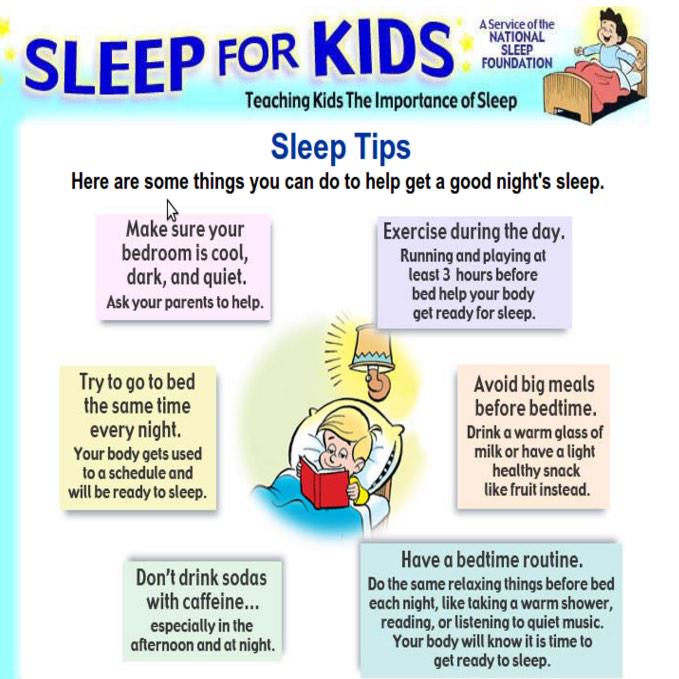 While most outgrow these problems quickly, there are plenty of ways you can address your child’s sleep problems and ensure they—and you—get a healthy night’s rest.
While most outgrow these problems quickly, there are plenty of ways you can address your child’s sleep problems and ensure they—and you—get a healthy night’s rest.
Bedtime fears and sleep anxiety
At some point in childhood, most children experience a fear of the dark or going to bed at night. Many young kids especially have difficulty separating what is real from what is imaginary, so while the idea of monsters under the bed may seem silly to you, it can seem very real and very frightening to your child.
While it’s important to let your child express their fears without you dismissing or ridiculing them, it’s also important not to support or legitimize their worries. Instead of using “fairy dust” to get rid of monsters or waving a magic wand to scare away any ghosts, for example, you’re better off explaining to you child how their imagination can trick them into mistaking normal things, such as shadows or creaking sounds, for something frightening.
[Read: Anxiety in Children and Teens: A Parent’s Guide]
You can also:
Start by understanding their fears.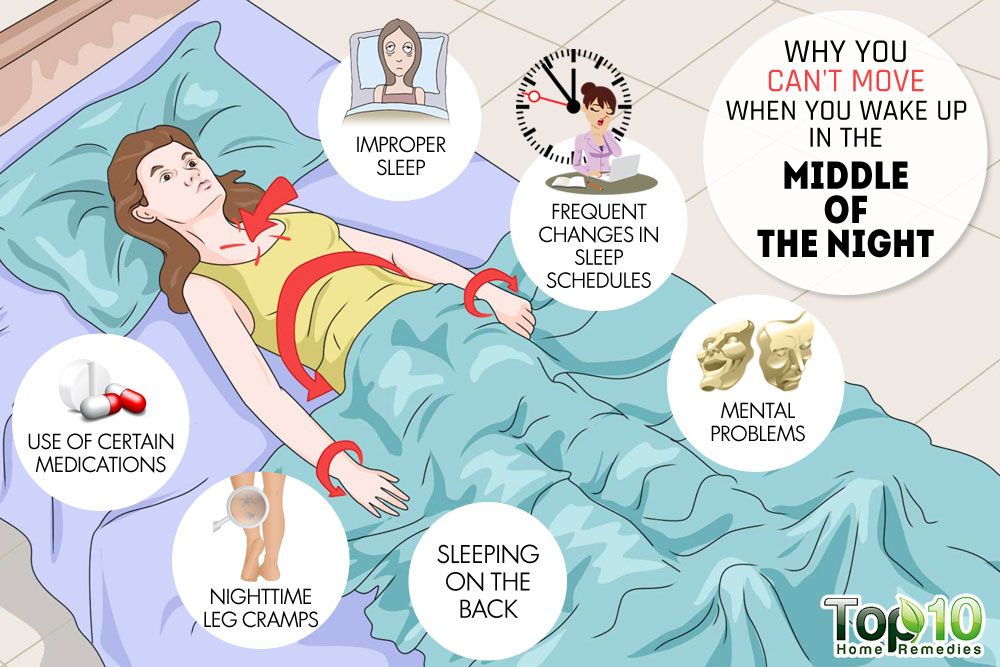 Acknowledge and empathize with your child’s fears before reassuring them that their worry is separate from reality and that nothing bad is going to happen.
Acknowledge and empathize with your child’s fears before reassuring them that their worry is separate from reality and that nothing bad is going to happen.
Use a night-light to give your child extra security in their bed at night, as long as it isn’t bright enough to disturb their sleep.
Let your child have a security object with them at night, such as a cuddly toy or special blanket. Having a pet in the room with them can also help to allay their fears, as long as it doesn’t disrupt their sleep.
Help your child explore their bedtime fears during the day. Have them check under the bed to see that there’s nothing under there, for example. Talking about their fears during the day rather than at bedtime can also help to build up their self-confidence and make them less anxious at night.
Avoid scary books, movies, or TV shows, even during the day. These will only fuel your child’s imagination and add to their fears at night.
Encourage your child to stay in bed, even if they wake up in the night. You want your child to learn that their bed is a safe place so it’s better to sit with them while they go back to sleep rather than remove them from their bedroom.
Nightmares
When kids get to preschool age and a fear of the dark tends to set in, they also become more prone to nightmares. Any issues or feelings they’re working through during the day can manifest themselves in disturbing dreams at night. As well as addressing their bedtime fears and anxiety (above), it’s important to talk to your child about any changes they’re experiencing in their life. Moving home or school, parents separating, or the addition of a new sibling to the family can all fuel uncertainty in a child’s life and prompt nightmares.
Whatever your child’s age or circumstances, take time each day to check in with them and stay up to date with what’s going on in their life and any issues they may be having at school or with their friends. If your child wakes you up after a nightmare, reassure them that it’s not real but don’t dwell too much on the content of the scary dream. Instead, focus on getting them ready for sleep again.
If your child wakes you up after a nightmare, reassure them that it’s not real but don’t dwell too much on the content of the scary dream. Instead, focus on getting them ready for sleep again.
Night terrors
Night or sleep terrors are episodes of screaming, flailing, and intense fear while your child is asleep. While it can be disturbing to witness your child having night terrors, it’s not usually a cause for concern. They’re often a byproduct of stress, lack of sleep, new medication, or changes in sleep environment, and most kids outgrow them by their teenage years. Unlike nightmares, your child remains asleep and will likely have no recollection of the event the next morning.
Symptoms of night terrors
- Thrashing around in bed, kicking covers off.
- Screaming in distress.
- Breathing heavily and a high heart rate.
- Sweating.
- Sitting upright in bed.
- Moving around the house (night terrors can happen in conjunction with sleepwalking).

Dealing with night terrors
Since attempting to wake your child from a night terror may cause them more distress, gently guide them back to bed or wait until they fall back asleep. You can reassure them with a pat on the back or by squeezing their hand. Most incidents don’t last for more than a few minutes.
While there’s no “cure” for night terrors, you can take preventive measures to ensure your child is safe. If they move around during a sleep terror, make sure any doors leading outside the home are locked, place a safety gate at the top of the stairs, and remove any dangerous or breakable objects from the immediate vicinity.
You can also help your child to deal with anything that’s fueling their stress and work to reduce tension. A relaxing bedtime routine can help, as can avoiding caffeinated drinks during the day. If the incidents take place around the same time every night, you could try waking your child up about 15-30 minutes before to see if that helps.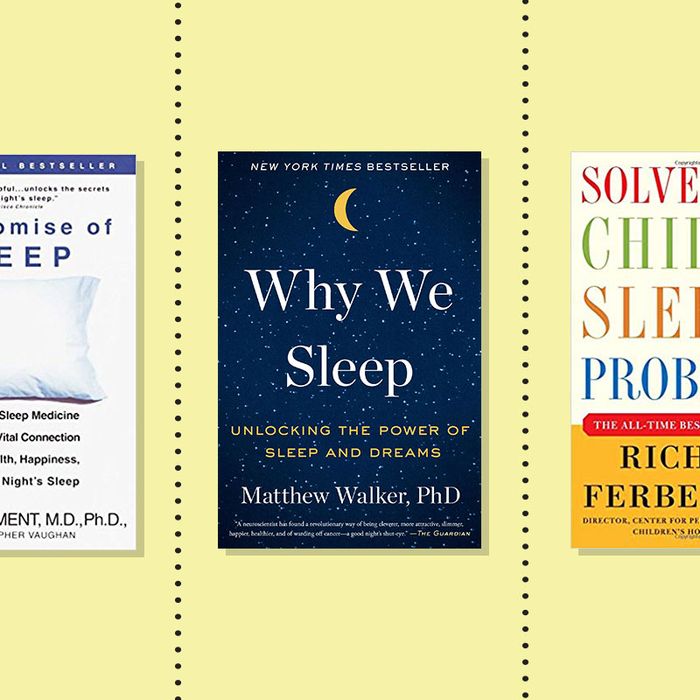
Sleepwalking
Sleepwalking doesn’t involve just getting out of bed; many sleepwalkers also talk, sit up in bed, or make repetitive movements such as fumbling with clothing or rubbing their eyes. Although your child’s eyes are open, they may have a glassy appearance, and since they’re still asleep, they won’t see the same way as when they’re awake. While their behavior may alarm you, your child isn’t aware of what they’re doing and most likely won’t remember it the next morning.
Causes of sleepwalking
Some influencing factors include a lack of sleep, an irregular sleep schedule, illness, stress, or certain medications. There’s usually no need to see a doctor unless the incidents are very regular, involve risky behavior, or result in your child feeling sleepy the next day.
Sticking to a regular sleep schedule and making sure your child is getting enough rest is often enough to resolve most sleepwalking issues. You can also help reduce stress levels by engaging your child in relaxing activities before bedtime. Encourage your child to go to the bathroom before winding down, as a full bladder can also contribute to sleepwalking.
Encourage your child to go to the bathroom before winding down, as a full bladder can also contribute to sleepwalking.
Sleepwalking and safety
Don’t try to wake a sleepwalker, as this might frighten them. Instead, gently guide them back to their own bed. Make sure windows and doors are locked and consider installing a safety gate outside your child’s bedroom or at the top of the stairs. Remove sharp or breakable objects from around their bed and clear out any clutter or toys that they could trip on in the night.
If your child shares a room with a sibling, don’t let them sleep in the top bunk of a bunk bed. Although sleepwalking usually stops by the teen years, keep car keys away from kids who are old enough to drive.
Bed-wetting
Although able to use the bathroom correctly during the day, some young children may struggle with bladder control issues at night, which can be humiliating and stressful. Bed-wetting usually occurs in children two to four years of age. However, it can continue with school-aged children as well. If both parents wet the bed when they were young, it’s likely that their child will as well.
However, it can continue with school-aged children as well. If both parents wet the bed when they were young, it’s likely that their child will as well.
Other possible causes of bed-wetting include:
- Your child’s bladder has not developed enough to hold urine for an entire night. Similarly, communication between their brain and bladder may not have fully formed.
- It is a response to stress, changes at home, a minor illness, or exhaustion.
- Your child is a deep sleeper and a full bladder fails to awaken them.
- Your child is constipated. Full bowels put pressure on the bladder.
- Your child’s body is producing too much urine at night.
Helping your child cope
Even though your child knows they’re not at fault, bed-wetting often makes them feel significant embarrassment and guilt. They may feel reluctant about sleeping over at a friend’s house or going to camp, for example.
Reassure them that you don’t blame them for it and instate a ‘no-teasing’ rule in your house. If you or another family member was also a bed-wetter, it might make your child feel better to know about it. Here are some other ways to manage the situation:
If you or another family member was also a bed-wetter, it might make your child feel better to know about it. Here are some other ways to manage the situation:
- Put a plastic cover over the mattress.
- Let your child help change the sheets. Explain that this isn’t a punishment. It helps teach responsibility.
- Set up a reward system. Give your child stickers for “dry nights” with a small reward after a certain number.
- Avoid lots of fluids before bedtime. Remind your child to use the bathroom again before bed.
- Set a bed-wetting alarm. If the problem persists, consider asking your child’s doctor about an alarm. These detect wetness and will wake the child up to use the toilet. This could be helpful for deep sleepers.
When to see a doctor about bed-wetting
If your child has been completely toilet trained for at least six months, and then starts wetting the bed, it could point to a medical problem that requires your doctor’s attention.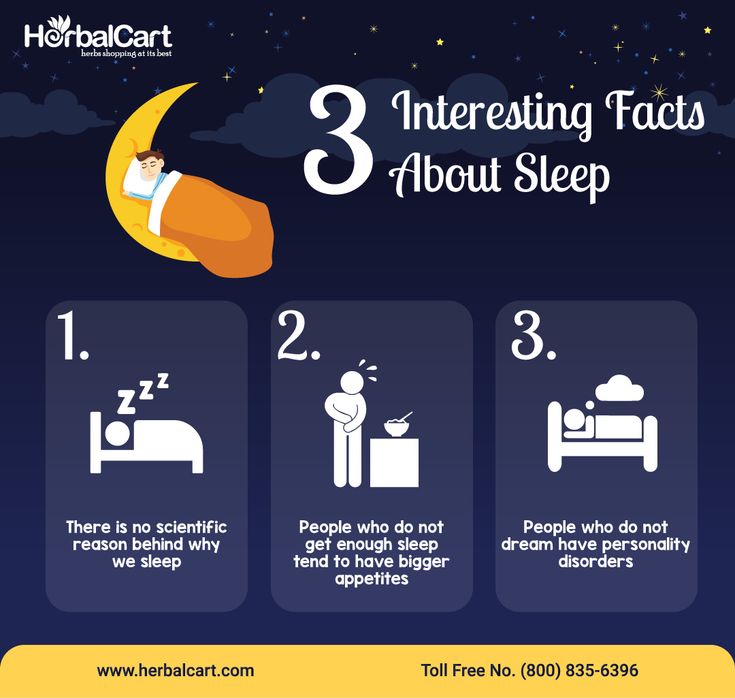 This is especially likely if the bed-wetting occurs along with other changes in your child, such as:
This is especially likely if the bed-wetting occurs along with other changes in your child, such as:
- Pain or a burning sensation while urinating.
- Cloudy or pink bloodstains on their underwear.
- Wetting their pants during the day.
- Swelling of their feet or ankles.
- Wetting the bed at seven years of age or older.
Continued bed-wetting, especially if the child is over seven or had previously outgrown it, may also be a sign of sexual abuse.
Authors: Anne Artley, Melinda Smith, M.A., and Lawrence Robinson
- References
Sleep-Wake Disorders. (2013). In Diagnostic and Statistical Manual of Mental Disorders. American Psychiatric Association. https://doi.org/10.
 1176/appi.books.9780890425787.x12_Sleep-Wake_Disorders
1176/appi.books.9780890425787.x12_Sleep-Wake_DisordersCDC – How Much Sleep Do I Need? – Sleep and Sleep Disorders. (n.d.). Retrieved May 13, 2022, from https://www.cdc.gov/sleep/about_sleep/how_much_sleep.html
Gerber, L. (2014). Sleep deprivation in children: A growing public health concern. Nursing Management, 45(8), 22–28. https://doi.org/10.1097/01.NUMA.0000451997.95978.2f
Nightmares and Night Terrors | Johns Hopkins Medicine. (n.d.). Retrieved May 13, 2022, from https://www.hopkinsmedicine.org/health/conditions-and-diseases/nightmares-and-night-terrors
Patient education: Bedwetting in children (Beyond the Basics)—UpToDate. (n.d.). Retrieved May 13, 2022, from https://www.uptodate.com/contents/bedwetting-in-children-beyond-the-basics
Sleepwalking—NHS. (n.d.). Retrieved May 13, 2022, from https://www.nhs.uk/conditions/sleepwalking/
National Sleep Foundation – Resource for more restorative sleep.
American Academy of Pediatrics – Provides information on children’s health issues.
Sleep Education – How to cope with various sleep disorders. A resource provided by the American Academy of Sleep Medicine.
Child Mind Institute – Helps navigate different aspects of childhood and adolescence.
Last updated: December 5, 2022
12 Ways to Teach a Little Child to Sleep at Night - March 13, 2020
Marina Rumyantseva — Consultant on Children's Sleep, Member of the Russian Society of Somnologists
Collage: Artem Ustyuzhanin / E1.RU, Anna Rybakova / E1.RU
Share
Four A year ago, a young mother from Yekaterinburg, Marina Rumyantseva, faced the fact that her four-month-old daughter stopped sleeping normally. She often woke up at night, haunted her parents, who had to get up to the child 7-10 times a night. — Until four months old, my daughter slept perfectly.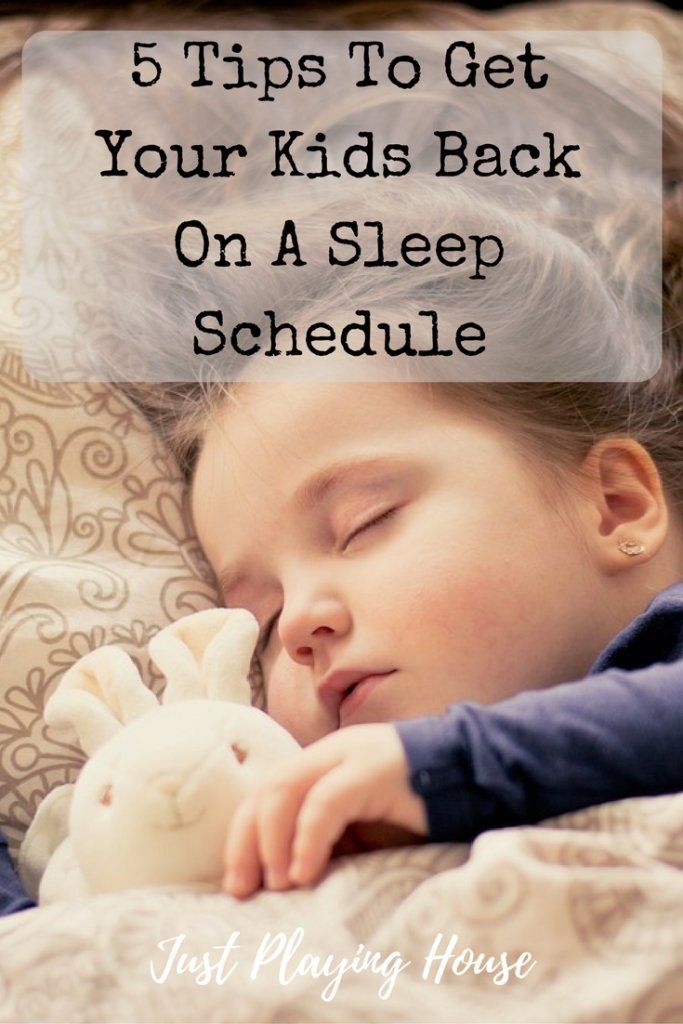 Wherever you put it, there it will fall asleep. But as soon as she was four months old, the baby seemed to be replaced: she began to wake up more often. Everything that worked before didn’t help anymore,” Marina recalls.
Wherever you put it, there it will fall asleep. But as soon as she was four months old, the baby seemed to be replaced: she began to wake up more often. Everything that worked before didn’t help anymore,” Marina recalls.
Marina herself almost stopped sleeping, fatigue gradually accumulated.
- I was sick in the morning, I was often in a fainting state. I dozed in the morning while my daughter played on the floor, and looked after her with one eye. The lack of normal sleep affected me physically. I was irritable, there was no mood to play with the child after especially difficult nights, says the young mother.
At first, the parents tried to solve the problem on their own, but it didn't work out. Then they turned to doctors for help to rule out the physiological causes of restless sleep.
- In our case, the daughter was completely healthy, but we were still advised to treat with nootropic substances. We decided to take our time and seek a second opinion. At the same time, I began to study the problems of sleep. That’s how I learned that insomnia can be treated with cognitive behavioral therapy, and only if it doesn’t work, turn to medication,” says Marina.
At the same time, I began to study the problems of sleep. That’s how I learned that insomnia can be treated with cognitive behavioral therapy, and only if it doesn’t work, turn to medication,” says Marina.
Marina managed to improve the child's sleep without drugs, while she continued to study the features of insomnia more and more deeply. So the young mother even received a diploma as a consultant in children's sleep. Now Marina herself gives advice to young parents on how to return normal sleep to their children, and maintains a blog about healthy children's sleep on Instagram.
We asked Marina Rumyantseva to give some advice for E1.RU readers.
About 50% of children living in megacities experience sleep problems
Collage: Anna Rybakova / E1.RU
Share
— Be prepared for the fact that the first two months the child will often wake up at night. During the day, his sleep will also be erratic.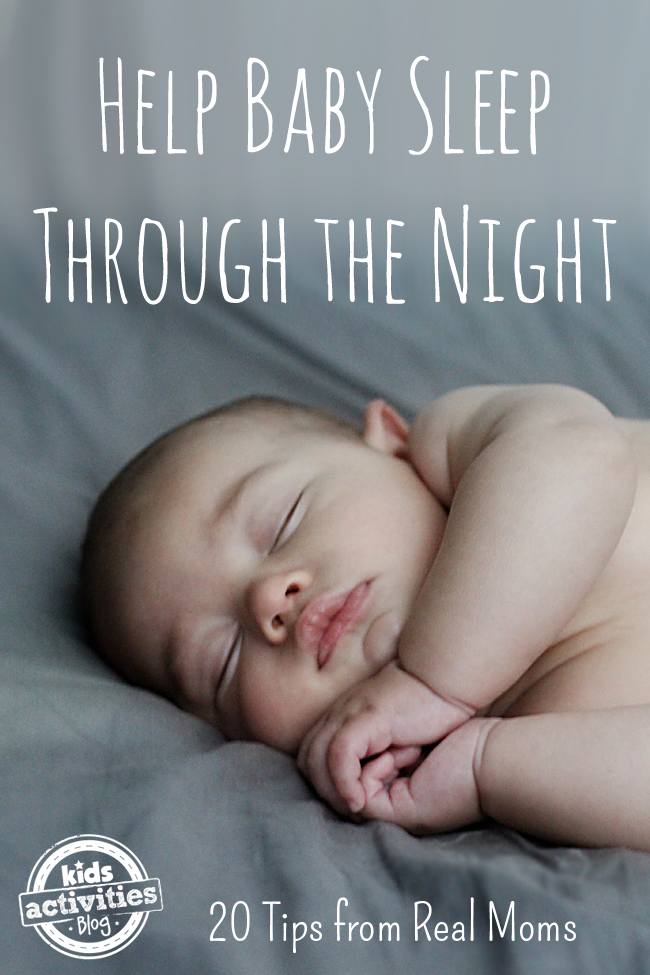 He can sleep for 20-40 minutes, then fall asleep immediately for 2 hours. This is fine. But remember that over time, night sleep should lengthen. You can speed up this process by following some simple rules.
He can sleep for 20-40 minutes, then fall asleep immediately for 2 hours. This is fine. But remember that over time, night sleep should lengthen. You can speed up this process by following some simple rules.
From 2 months I advise you to darken the room as much as possible with thick curtains. So the child will understand that the night has come and he needs to sleep. Of course, the baby will still wake up during the night until he needs nightly feeds. There is no need to turn on the light and start playing with it. Try to feed and lull him in the dark.
A child will never be tired enough to say, “Mom, I want to sleep. Why don't you carry me to bed?" He still doesn't know how to speak. Therefore, it is important that parents themselves make decisions for their child and anticipate the moment when it will be time for sleep.
Remember that the younger the child, the more vulnerable he is. Five extra minutes - and he has already gone too far, overtired. In this state, it will be difficult to lay it down. Usually the child starts screaming, breaking out, and the mother thinks: “He must not want to sleep!” In fact, he wants to sleep so much that he no longer has the strength.
Usually the child starts screaming, breaking out, and the mother thinks: “He must not want to sleep!” In fact, he wants to sleep so much that he no longer has the strength.
How do you know when your baby is tired and ready to go to bed?
For children under six months of age, signs of fatigue may be “sticking” (looking at one point), touching the ears, nose, yawning. Also watch the child fall asleep: if he fell asleep calmly in 10-15 minutes, then you put him to bed on time.
Be prepared that after six months your baby will be more and more reluctant to go to bed. Children think that sleeping is “boring”.
Cool moist air is another condition for the baby to sleep better. The room should be 20-23 degrees Celsius. Before going to bed, the room should be ventilated so that air circulates through it. I also recommend using humidifiers. Due to the dryness of the nasopharyngeal mucosa, a child can automatically touch his nose with his hands, trying to eliminate the interference, and because of this, wake up.
If during sleep the child constantly snores or breathes frequently through the mouth, this is a sign that you need to contact the ENT. Your baby may have obstructive sleep apnea. It is also called "sleep apnea disease". This is when the snoring suddenly stops and there is a frightening cessation of breathing. After that, the sleeping person snores loudly, sometimes tossing and turning, and then begins to breathe again.
White noise is a monotonous sound recorded at different frequencies. The secret is that it allows a person to move more smoothly from one sleep cycle to another. So sleep becomes more restorative. Usually parents use white noise if loud neighbors live nearby or there is construction going on outside the window.
The volume of white noise must not exceed 50 dB, its source must be at a distance of 2 meters from the crib. Many mothers are afraid that this is loud for a child. Actually it is not. I measured the same sounds (surf, driving car) in real life, and they turned out to be much louder - from 60 to 70 dB.
Parents often think that only boys choose the sound of a moving train or car, but this is not true: girls love them too
Collage: Anna Rybakova / E1.RU
Share
During sleep, you can turn on the sound of a vacuum cleaner, extractor hood, running water in the kitchen, wind, waterfall, flying plane and driving car, etc. The sound is selected individually depending on what the child likes.
In my practice there was a case when a child protested against any white noise. Whatever sound they turned on, he showed that he did not like it. We went through a lot of options, and when we finally turned on the sound of a moving train, it just went limp. Now he only sleeps with him.
Get your baby to bed with a daily routine - a ritual that you will repeat over and over before bed. Every evening you can read a book, then close the curtains, turn on a dimmed nightlight, feed your baby, get a massage, etc. You can turn on relaxing music or white noise. All this helps hyperactive children calm down, especially if there are guests in the house.
You can turn on relaxing music or white noise. All this helps hyperactive children calm down, especially if there are guests in the house.
Watching TV before going to bed is not rest. At this time, the child's visual analyzer works, and the brain continues to process information. In addition, TV, like phones and other gadgets, is a source of white light. It disrupts the sleep hormone melatonin. Therefore, it is better not to watch TV at least an hour and a half before bedtime. It is also not necessary to arrange Skype calls with grandmothers at this time, so as not to overexcite the baby.
It is advisable to turn off the TV during sleep. Many parents think this way: if the child learns to fall asleep under the TV, he will be able to sleep in any conditions. In fact, this is disrespectful to the needs of the child. It is better to create comfortable conditions for him to sleep so that he can recover as much as possible.
One of the problems of megacities is an excess of lighting. Yekaterinburg has a lot of lanterns and luminous billboards. All this also negatively affects the quality of sleep. In front of my house there is a cafe, and above it is a huge LED screen. It shone very brightly both during the day and at night, and at the same time shimmered with different colors. We had to use blackout curtains to sleep well again until it was turned off at night after someone complained.
Yekaterinburg has a lot of lanterns and luminous billboards. All this also negatively affects the quality of sleep. In front of my house there is a cafe, and above it is a huge LED screen. It shone very brightly both during the day and at night, and at the same time shimmered with different colors. We had to use blackout curtains to sleep well again until it was turned off at night after someone complained.
If you sleep for a long time during the day, then nighttime festivities may begin at night or in the morning. In this case, the time of daytime sleep should be limited. If the baby sleeps for more than 2-2.5 hours, wake him up and play. At the same time, remember that due to age, the child cannot stay awake all day. He will be tired and will not be able to develop normally.
Try to keep your sleep and wake intervals. However, they may change on a case-by-case basis. So, at 4–6 months, a child can have an average of 3–4 daytime sleeps, at 6–8 months - 2–3 daytime sleeps, at 9-13 months - 2 naps.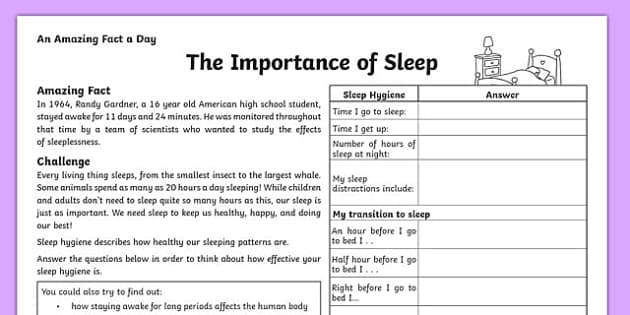 The later you go to one dream, the better. It is good if this happens between the ages of 15 and 18 months. Make sure that the only daytime sleep is at least 2 hours. This will allow the child to sleep.
The later you go to one dream, the better. It is good if this happens between the ages of 15 and 18 months. Make sure that the only daytime sleep is at least 2 hours. This will allow the child to sleep.
The graph shows the average values, which in each case may differ depending on the individual characteristics of the child.
Infographics: Anna Rybakova / E1.RU Otherwise, the child may constantly want to sleep, be nervous, scandalize and disobey their parents due to a sharp increase in wakefulness. It is advisable to keep one dream until the child is 4-5 years old (even if it is very short - 40-60 minutes each). The later you give it up, the better.
The total value of the duration of daytime and nighttime sleep
Infographics: Anna Rybakova / E1.RU
Share
At 4 months, a child may suddenly start sleeping for 30-40 minutes, his sleep is fragmented, he does not get enough sleep.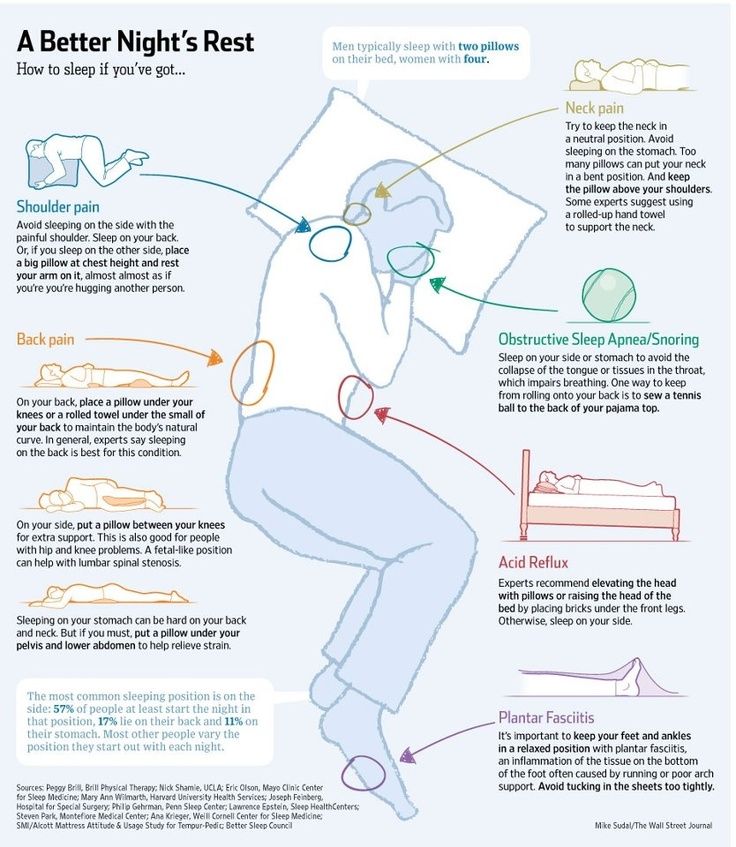 There is a regression of sleep - a kind of developmental leap. The problem is that the child still wants to sleep, but he can no longer do it as before, and he still does not know how to sleep differently.
There is a regression of sleep - a kind of developmental leap. The problem is that the child still wants to sleep, but he can no longer do it as before, and he still does not know how to sleep differently.
Many old laying methods become worse and worse with time. Therefore, parents need to take the process into their own hands and change tactics. Try putting your baby to sleep as early as possible to lengthen his nightly sleep (up to 10-12 hours).
When my daughter was 4 months old, we had a classic sleep regression. Perhaps if at that moment we had immediately adjusted the mode and conditions of sleep, many problems with sleep could have been avoided.
Why does the child wake up at night? There can be several reasons: cold or heat, hunger (up to 9-12 months it is quite normal to have nightly snacks), the tummy or teeth are worried, illness, the wrong regimen, accumulated fatigue, overexcitation before bedtime, and more.
Children's sleep is cyclical, it proceeds in waves.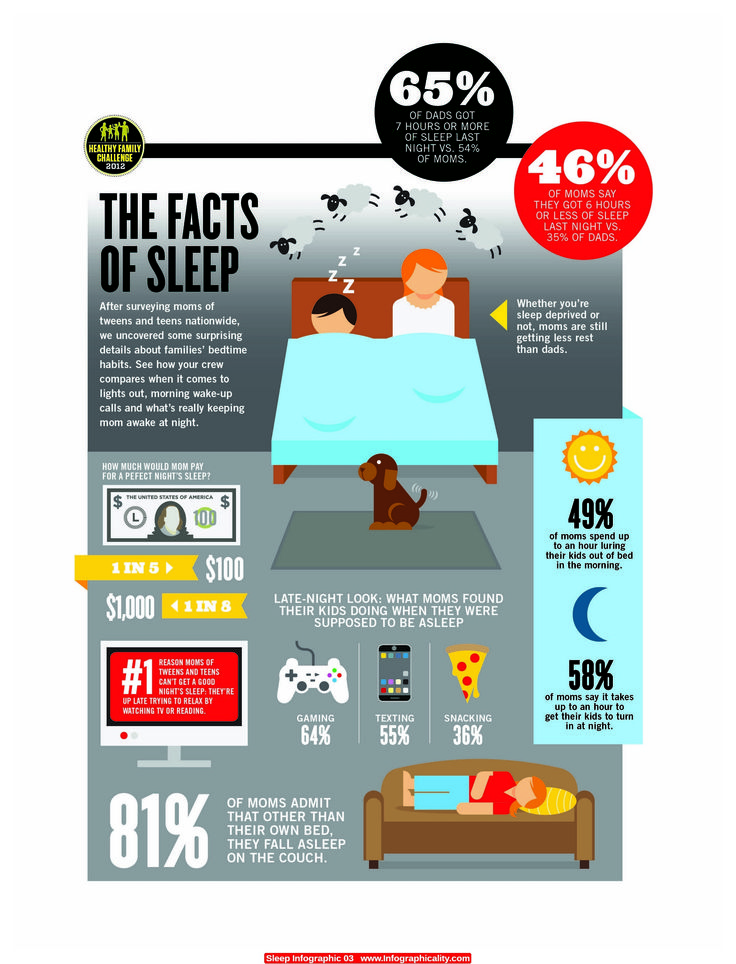 The closer the morning, the less its depth and the more restless sleep. Especially if there are errors in the baby mode, then most likely they will appear in the second half of the night.
The closer the morning, the less its depth and the more restless sleep. Especially if there are errors in the baby mode, then most likely they will appear in the second half of the night.
Another reason is that sleep associations are triggered. This usually happens after 4 months. The baby falls asleep in the arms of his mother, and wakes up in his crib, where he was already transferred to sleep. He opens his eyes, but his mother is not around. He begins to worry: “Where is mom ?!” - and cries.
Experts say that the safest sleeping position for a child is sleeping on the back
Collage: Anna Rybakova / E1.RU
Share
My four-year-old daughter sometimes asks to leave the door to her room open so she can see the light from another room. So she is calmer, and she falls asleep faster. But if at night she suddenly wakes up and does not see the light, she starts screaming: “Who closed the door?” She feels like she has been deceived.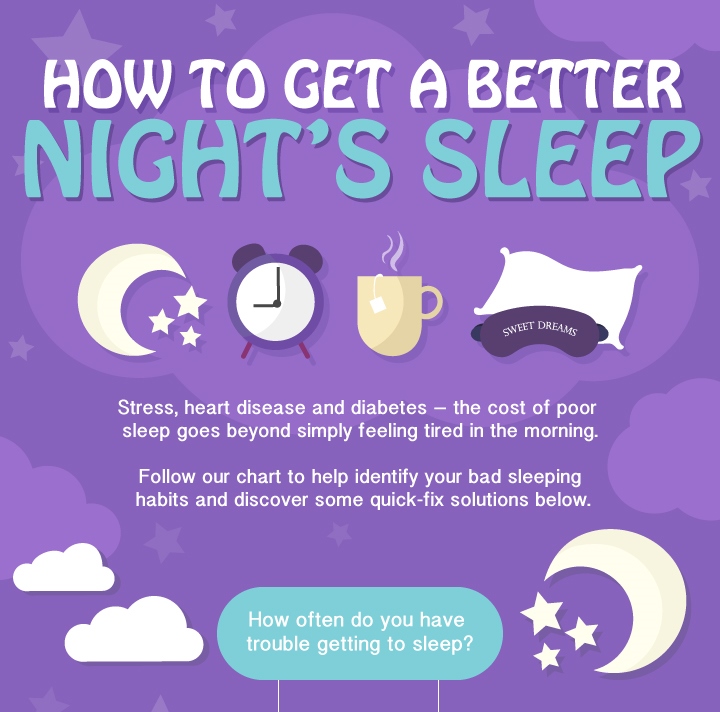
She, like that baby, fell asleep under certain conditions and woke up under different conditions. But she is already four years old, she can speak and express her dissatisfaction with the changed circumstances in words. It is extremely difficult for a small child to do this. He can only show it by crying. But most parents don't understand what that means.
To help your baby sleep peacefully, try putting him to bed sleepy but awake, this way he will wake up in the same conditions as when he fell asleep, and it will be easier for him to fall asleep again without additional help.
Early bedtime is a must for any child at any age. Going to bed early is physiological, because it is caused by the production of certain hormones. In the evening, closer to 21-22 hours, the peak of melatonin production occurs, which is responsible for sleep. In the morning, cortisol is produced, it affects the desire to stay awake. Its peak is at 5-6 in the morning, so parents note that in the second half of the night the child sleeps more calmly.
Try to get your child to sleep by 7:00 pm or 8:00 pm. Then he will get more hours of the deepest and most restorative sleep. From 4-5 months, I would advise putting the baby to bed from 18 to 20 hours so that he has 11-12 hours of sleep. So he will sleep the norm of night sleep and wake up at physiologically active hours.
Early laying has other advantages. Parents have a lot of free time in the evening hours, which they can devote to themselves. One mother whom I consulted once sent me this message: “Marina! I have already managed to do the laundry, watch a couple of episodes of the series, cook dinner and I don’t know what else to do. It's so cool!"
It turned out that motherhood can be completely different, that it is not necessary to suffer, and during maternity leave there may be moments when you can feel like you are on vacation, read a book or watch a series, spend a romantic evening with your husband.
There is such a thing as sudden infant death syndrome.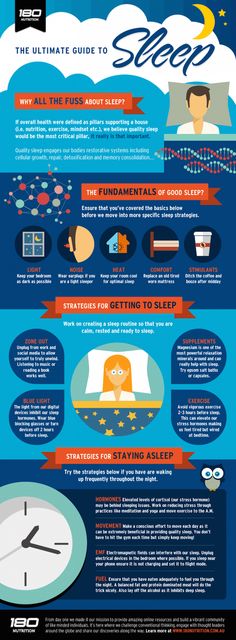 This is when a child dies during sleep for an unknown reason. Approximately one third of infant deaths are due to the fact that the parents did not properly organize the child's bed. For example, a child can suffocate if there are soft objects in the crib (blankets, bumpers) by simply burying their nose in them. A safe crib should contain only a mattress, a taut sheet, and a baby.
This is when a child dies during sleep for an unknown reason. Approximately one third of infant deaths are due to the fact that the parents did not properly organize the child's bed. For example, a child can suffocate if there are soft objects in the crib (blankets, bumpers) by simply burying their nose in them. A safe crib should contain only a mattress, a taut sheet, and a baby.
If your child sleeps with you, give him a separate place. It's not safe to sleep between mom and dad. The child may roll over several times, fall and end up between the sofa and the wall, suffocate. Clients said that they woke up in the middle of the night, and the child was not around. They began to look for him, and it turned out that he was under the covers - all red, he did not have enough air.
How can I be safe when sleeping together?
Bed rails (net) can be used, which are fixed under the mattress. So you can be sure that the child does not crawl away and does not fall. A contraindication for joint sleep may be overweight of one of the parents (the child may roll in your direction), taking drugs or other drugs that depress the nervous system.
It may be safer to sleep in a side crib that is well attached to yours. The safest sleeping position for an infant is on its back.
Often in the first months after the birth of a child, the mother is deprived of sleep. This leads to the fact that over time she accumulates fatigue. Its resources are gradually depleted. This can lead to postpartum depression.
Sometimes mothers come to me and ask me to teach them to love their child again. They say, “I take it out on my child. I hit a toddler recently because I couldn't control my emotions. Help me learn to love a child again.”
I recommend young mothers not to be shy about asking for help from relatives in everyday life or caring for a child, to try to get more rest instead of some non-urgent things. And if you feel something like this (no joy, everything is annoying, you don’t feel love for the child or you constantly break down on him), you need to restore your resource, because in this state, the mother will not be able to help the baby.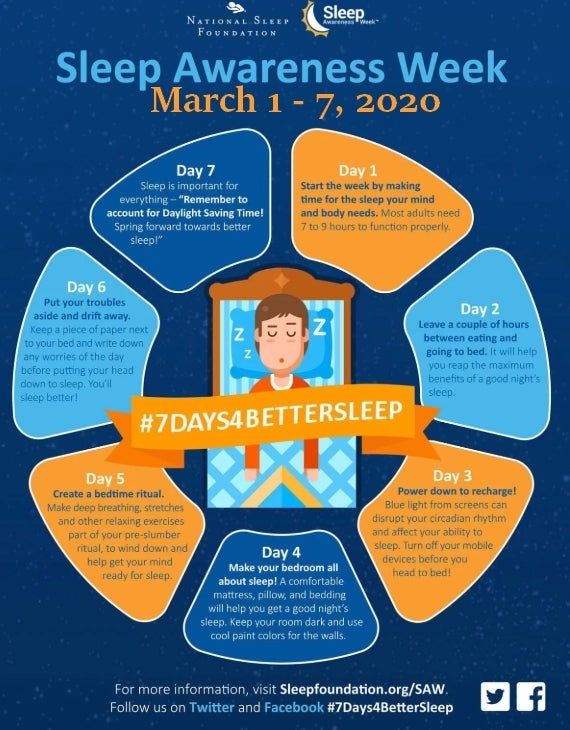 In such cases, it is best to seek help from a psychologist or psychotherapist.
In such cases, it is best to seek help from a psychologist or psychotherapist.
Earlier we published an interview with the Director of the NII OMM Galina Malgina, who told in detail why mothers kill babies and how to save a wife from postpartum depression. You can read it here.
You can choose a comfortable baby cot here.
When a child starts sleeping through the night
Do your children sleep very badly at night, wake up 3 to 10 times, go to bed for a long time and protest against daytime sleep? You are not alone! Research on children's sleep and surveys of parents around the world show that about 60% of parents of children from birth to three years of age experience the problem of children's sleep in one form or another. Most often, these disorders are manifested in children in long and difficult falling asleep and frequent awakenings at night.
“When will the baby start sleeping through the night without waking up? How to make sure that the baby sleeps all night, falls asleep quickly and without the active help of parents, and daytime sleep is long and of high quality? How to teach a baby to sleep at night without waking up? Almost all parents of badly sleeping children have such questions.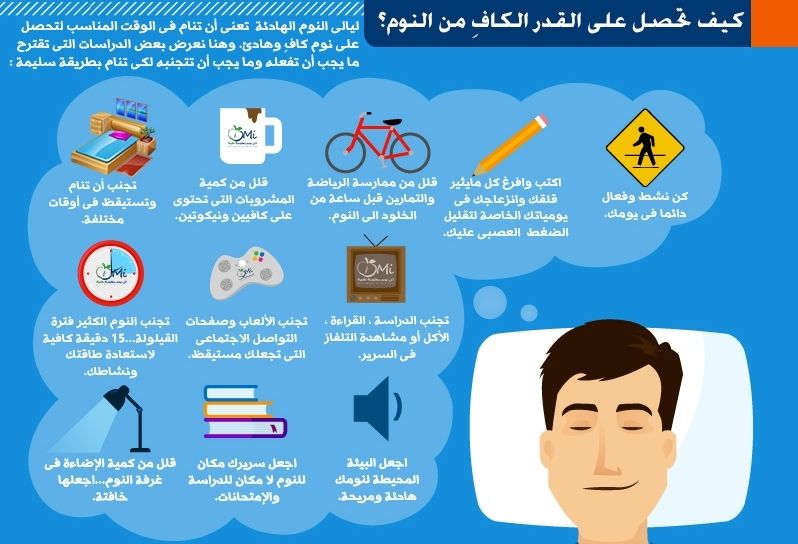
In response to these questions, the topic of teaching children to fall asleep on their own often comes up. Indeed, the inability to fall asleep on your own is one of the reasons for frequent awakenings at night. And children who have mastered the skill of falling asleep on their own sleep at night without waking up.
But how do you teach your child to fall asleep on their own? And will sleep training really solve all of your child's poor sleep problems day and night? In this article, we will analyze the topic of self-falling asleep in detail and you will understand what you need to do to teach your child to sleep through the night.
Contents:
- What is spontaneous falling asleep?
- Why should children be taught to fall asleep on their own?
- When can I start learning how to fall asleep on my own?
- How to prepare your baby for learning to fall asleep on his own?
- What are the methods of teaching self-sleeping?
What is spontaneous falling asleep?
Sleeping on your own is when a child falls asleep with little or no parental help. Putting down a baby who can fall asleep on his own looks like this:
Putting down a baby who can fall asleep on his own looks like this:
- Parents perform a ritual of preparing for sleep0163
- Putting a sleepless baby in the crib
- Kiss him
- Say "Sleep baby"
- Turn off the lights and leave
- Baby falls asleep by himself in his crib in 10-15 minutes
- At night, the baby wakes up for feeding and immediately falls asleep
- When waking up at night between sleep cycles, the baby moves on to the next cycle on its own
This bedtime may seem like a miracle to most moms and dads who put their babies to bed for several hours with motion sickness, feedings and rise to them 10 times a night. But we can say with confidence that this is not a miracle, but a reality! Because every healthy baby can learn to fall asleep on their own, and the task of parents is to help the baby master this.
Falling asleep on your own is a skill that can be taught to any healthy baby from the age of 6 months.
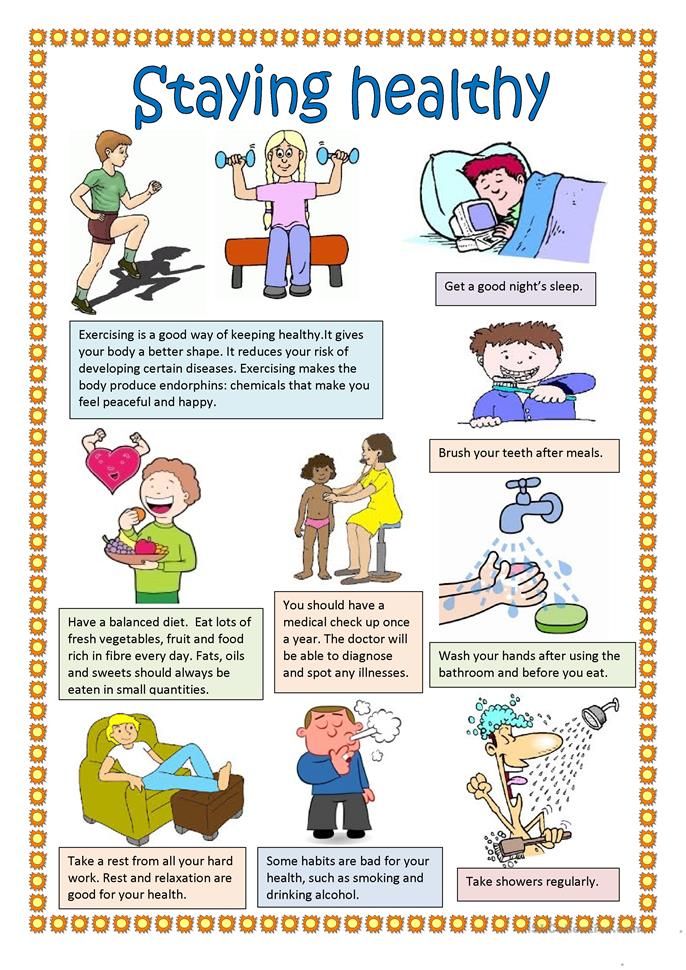
Just like you help your baby learn how to drink from a cup or eat with a spoon, crawl, talk, walk, you need to help your child learn how to fall asleep on his own. All toddlers can learn these skills on their own sooner or later, but with your help they will learn them faster and more effectively. Teaching your baby to fall asleep on their own is the task of parents!
Why is it so important to teach a child to fall asleep on his own?
Why is it so important to teach your child how to fall asleep on his own? Because the inability to fall asleep on your own is one of the reasons for frequent awakenings at night and short daytime sleeps. It's all about short-term awakenings between sleep cycles. All adults and children during a night's sleep wake up between sleep cycles (see "falling asleep - waking up" in the illustration). Only adults straighten the pillow and blanket, roll over to the other side and fall asleep again. Because adults know how to fall asleep on their own, without outside help.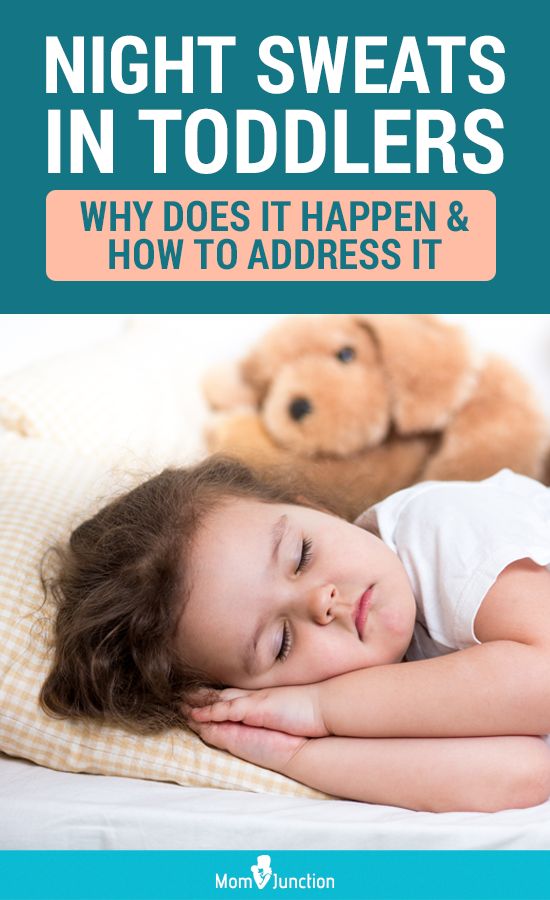
And infants with brief awakenings need help getting back to sleep. When awakening at night, children need to recreate the conditions under which they fell asleep, such as motion sickness or breastfeeding. And if these conditions can only be recreated with the help of parents, then parents will have to get up and help the child fall asleep.
Children who are taught to fall asleep on their own easily cope with short-term awakenings without the help of parents and wake up only for feeding.
It is important to understand that the inability to fall asleep on your own is NOT the ONLY reason for frequent nighttime awakenings. Therefore, before starting training, it is important to understand the reasons and prepare the baby.
When can I start learning to fall asleep on my own?
Take your time to start learning. One UK study shows that learning to fall asleep on your own before 6 months of age:
- causes stress for both mum and baby
- May cause feeding problems (whether breastfed or formula-fed)
- The effect of any early learning does not guarantee the absence of sleep problems after 6 months
We do not recommend self-sleep training for babies under 6 months of age!
But you can instill the right sleep habits almost from birth.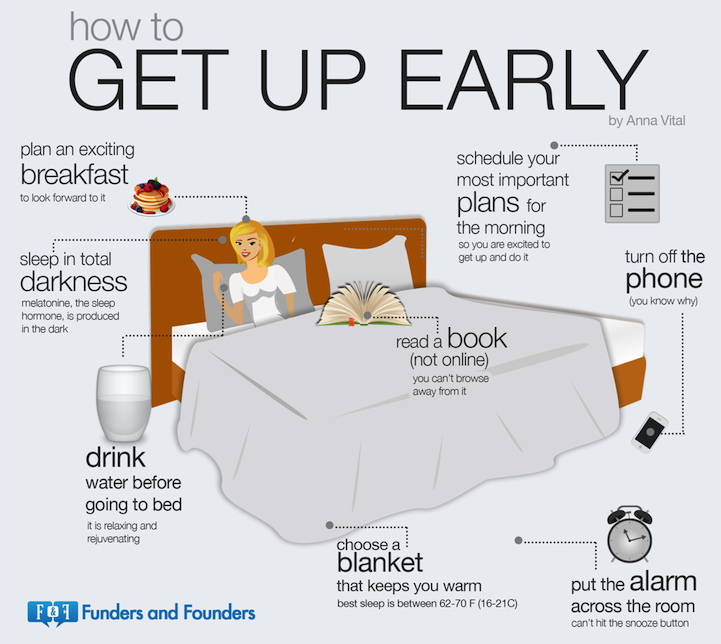 The first and surest step to falling asleep easily on your own is to use the different ways to soothe the baby do not accustom to one method of soothing. Let the child sometimes fall asleep with other family members, not only with the mother. Let your baby at least try to find his own way to calm down and fall asleep, so put your baby to bed sleepy, but awake!
The first and surest step to falling asleep easily on your own is to use the different ways to soothe the baby do not accustom to one method of soothing. Let the child sometimes fall asleep with other family members, not only with the mother. Let your baby at least try to find his own way to calm down and fall asleep, so put your baby to bed sleepy, but awake!
VIDEO LESSON
How to Teach Falling Asleep on Your Own?
More
Which method of learning to fall asleep on your own should I choose?
In order to teach your baby to fall asleep on their own, many methods have been created. The essence of all methods is to give parents a clear algorithm of actions and help to clearly and consistently instill in the baby new associations for sleep. It is especially important to follow the algorithm for tired parents who stay up all night and often make “bad decisions” out of fatigue.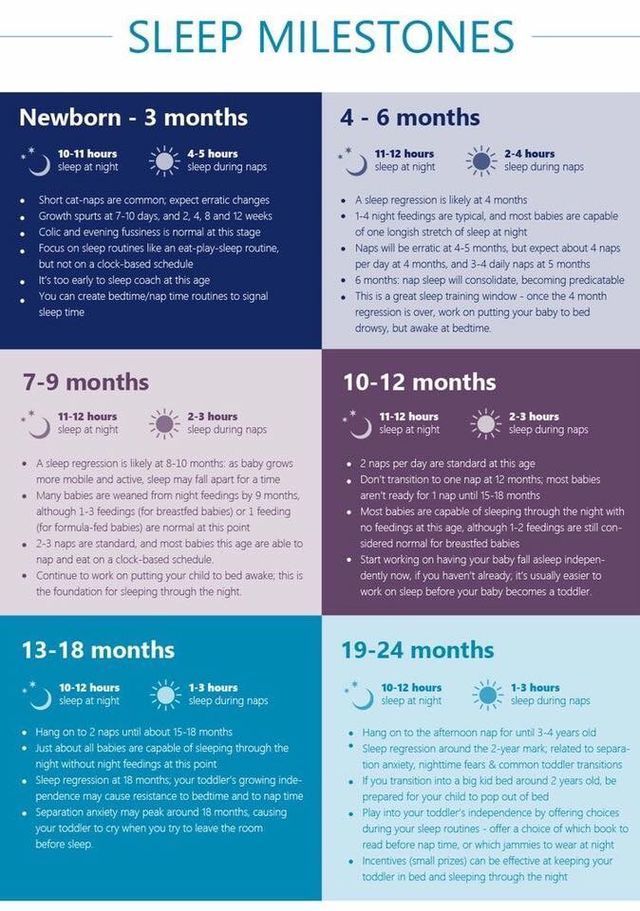
All the many existing methods of self-falling asleep can be divided into two main groups: hard methods (or Let Cry methods) and soft methods (or No Cry methods).
Hard or Let Cry methods involve rapid changes in associations to falling asleep, minimal or no parental assistance, and allow the child to cry during learning.
- In the group of Let Cry methods there are 2 main methods:
- Cry-it-out (CIO), "Cry before falling asleep", "Scream": method by Mark Weissbluth
- Time checks, Periodic Check Method, Controlled Crying Method: Method Richard Ferber / Edouard Esteville
Despite numerous studies confirming the effectiveness and safety of rigorous sleep training methods, they are heavily criticized by professionals and parents. And the argument is the danger of prolonged weeping. Crying is the baby's only way to communicate with the outside world, and ignoring crying can harm the baby's psyche and cause attachment disorders.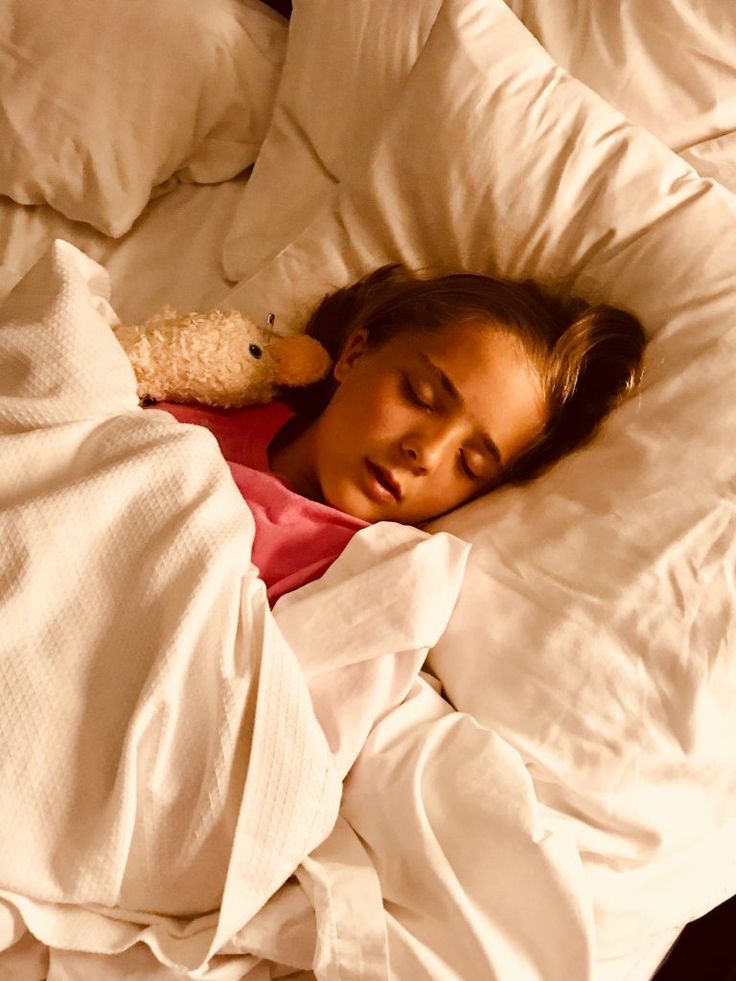
Mild or No Cry Methods advocate the slow and gradual replacement of sleep associations with others, with maximum parental help and parental comfort. Among the soft methods, 3 main ones stand out:
- The Shuffle, Slow Distancing Method: Kim West method, which the Sleep, Kid team represents in Russia
- Put Up - Put Down, The “Hug-Put Down” method: Tracy method Hogg
- Fading: Elizabeth Paintley method
We urge you to be very careful about the method of teaching your baby to fall asleep on his own. Remember that prolonged crying before bed can develop into a negative association with sleep and negatively affect the child and his emotional state.
The first task of the Sleep Baby project is the physical and psychological safety of the baby. Therefore, we adapt all the proposed methods, taking into account the views of modern psychology on the development of babies, they have been examined by child psychologists and breastfeeding specialists!
We have adapted the Kim West method to the Russian mentality and characteristics of parenthood. We made sure that the Slow Retract method is effective and has passed the test of time, it has been successfully used all over the world for more than 20 years!
We made sure that the Slow Retract method is effective and has passed the test of time, it has been successfully used all over the world for more than 20 years!
Why do we think the Kim West Method is the best method possible? Because:
- Parents do not intervene where the child can cope on his own, and help where he cannot yet!
- Mom or dad stays in the room with the baby until he falls asleep.
- Adults gradually reduce the degree of their assistance until the child masters the skill. The pace of change is individual!
- You can teach your baby to fall asleep on his own both in a separate bed and when sleeping together.
- The method is complex and requires an obligatory stage of preparation!
Be sure to pay attention to our video tutorial "How to teach your baby to fall asleep on his own?" >>
What is important to do before starting the course?
The most common mistake of all parents is to start learning to fall asleep on their own without preparation.











